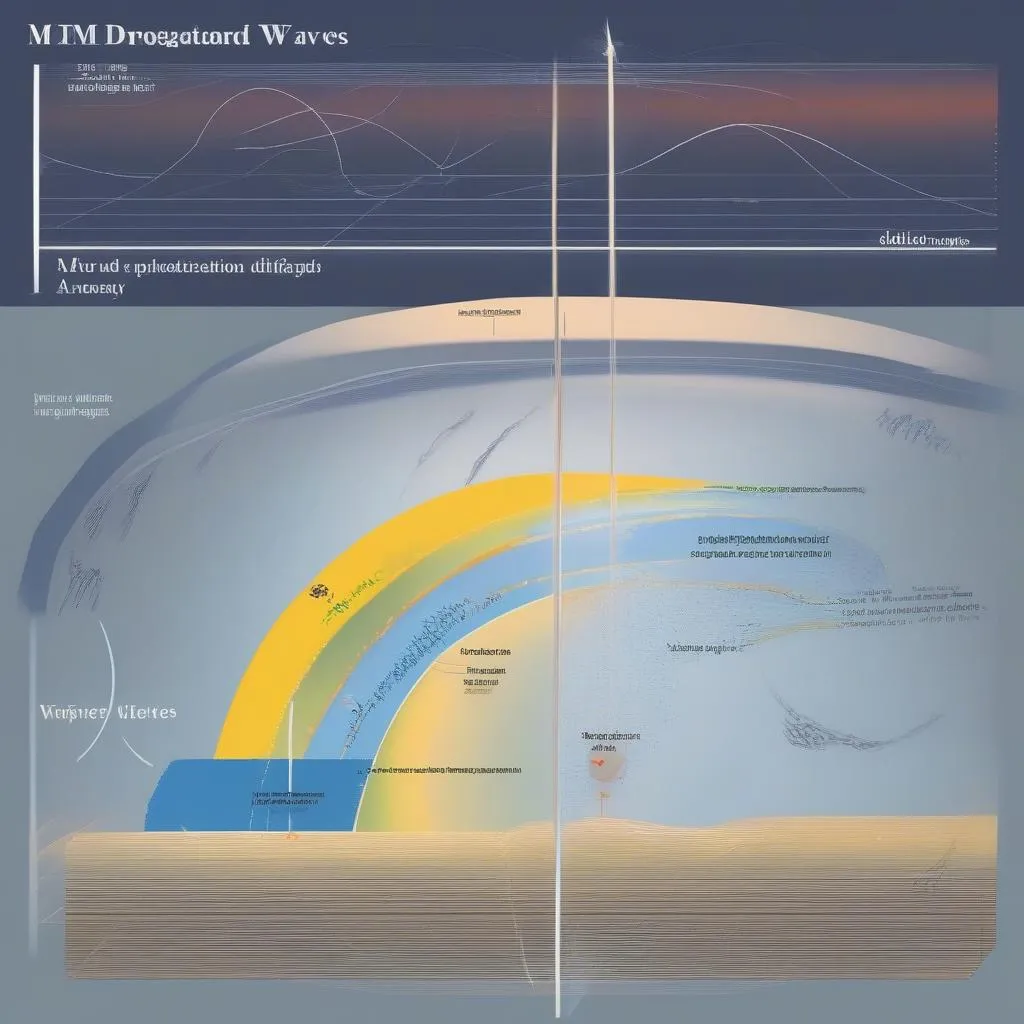Have you ever been on a road trip, driving through a vast, empty landscape, and suddenly your favorite song on the radio fades away, replaced by static? That, my friend, is the limit of a radio signal’s reach, at least for that particular station. But the journey of radio waves, those invisible messengers, can be far more fascinating than you might think.
Decoding the Distance: Factors Influencing Radio Signal Reach
While listening to the radio on your way to, let’s say, the iconic Golden Gate Bridge seems mundane, the science behind it is anything but. Several factors determine how far a radio signal can travel:
1. Frequency: The Wavelength of Travel
Like ripples in a pond, radio waves come in different sizes, or frequencies. Lower frequencies, like those used for AM radio, have longer wavelengths that can diffract around obstacles like mountains and buildings, reaching greater distances. Higher frequencies, used for FM radio and TV broadcasts, have shorter wavelengths that travel in straighter lines, making them more susceptible to blockage.
2. Power: The Strength of the Signal
Imagine shouting across a crowded room versus whispering in someone’s ear. The louder your voice, the farther it carries. Similarly, a radio transmitter with higher power can send its signal across longer distances. This is one reason why you might pick up distant AM stations more easily at night when there’s less atmospheric interference.
3. Antenna Height: Reaching for the Sky
Think of a lighthouse beam; the higher the lighthouse, the farther its light can reach. Similarly, a taller transmitting antenna allows radio waves to travel farther before being blocked by the Earth’s curvature.
4. Atmospheric Conditions: Riding the Airwaves
Radio waves don’t travel through a vacuum. The atmosphere, with its varying layers and weather patterns, can either help or hinder their journey. For instance, certain atmospheric layers can reflect radio waves, allowing them to bounce back towards Earth and travel further.
5. Obstacles: The Roadblocks in the Path
Just as your view of a cityscape can be obstructed by tall buildings, radio waves can be blocked by physical obstacles like mountains, dense forests, and even large buildings. This is why radio reception can be spotty in certain areas.
 radio-wave-propagation
radio-wave-propagation
Beyond Our Planet: Radio Waves in Space
The reach of radio waves isn’t limited to our planet. In fact, they’ve become our ambassadors to the cosmos. Scientists use powerful radio telescopes, like the one at Arecibo Observatory in Puerto Rico, to send and receive radio signals from distant stars and galaxies.
“We are constantly bombarded by radio waves from space,” says Dr. Amelia Chandra, a renowned astrophysicist and author of “Whispers from the Cosmos.” “These signals provide valuable insights into the universe’s origins, the life cycle of stars, and the potential for life beyond Earth.”
 arecibo-observatory
arecibo-observatory
Planning Your Trip? Consider Radio Waves!
While you might not be using radio waves to communicate with aliens on your next vacation, understanding their limitations can enhance your travel experience. If you’re planning a road trip through remote areas, consider packing a traditional radio with good AM reception or downloading podcasts and music in advance.
FAQs: Your Burning Questions Answered
Q: Can radio waves travel forever?
A: Technically, yes, radio waves can travel indefinitely through space. However, their strength diminishes with distance, eventually becoming too weak to detect.
Q: How far can AM radio waves travel?
A: AM radio waves can travel hundreds, even thousands, of miles, especially at night when atmospheric conditions are favorable.
Q: Do I need to worry about radio wave interference on my trip?
A: In most cases, no. Modern electronic devices are designed to minimize radio wave interference. However, it’s always a good idea to consult your device’s manual for specific recommendations.
Explore Further with travelcar.edu.vn
Looking for more travel tips and insights? Visit travelcar.edu.vn for a wealth of information on destinations, travel planning, and more.